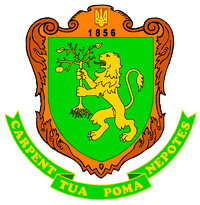TECHNOLOGICAL FEATURES OF PRODUCTIVITY FORMATION AND QUALITY IMPROVEMENT OF MEADOW CLOVER GREEN BIOMASS
Keywords:
soil tillage, fertilization, meadow clover productivity, green biomass qualityAbstract
The article emphasizes the technological aspects of enhancing productivity and improving the quality of meadow (also called red) clover (Trifolium pratense L.) green mass in contemporary agriculture.
It explores scientific methods for assessing the effects of soil tillage and fertilization techniques on both the yield and qualitative characteristics of meadow clover green mass.
The provision of high-quality feed for livestock remains a top priority for agricultural science and practice. The article outlines strategies to optimize energy resources through the establishment of high-yielding agrophytocenoses of perennial leguminous grasses, specifically red clover, which is well-suited for the conditions of the Western Forest-Steppe of Ukraine due to its high protein content.
The study presents findings on the variability of qualitative indicators of red clover green mass based on different tillage and fertilization methods, conducted during 2023–2024.
Three primary tillage methods were evaluated: conventional (control), chisel, and tiered (layered), with a particular focus on the beneficial impact of the PYa-4-40 plow at a depth of 14–16 cm, under two types of fertilization systems (organic and organic-mineral).
The research indicated that the method of primary tillage and the fertilization system applied to dark gray podzolic light loam soil did not significantly impact the qualitative indicators of green mass yield for the Truskavchanka red clover variety.
Plowing with the PYa-4-40 plow resulted in a modest increase in the nutritional value of the green mass when compared to conventional and chisel tillage methods. The benefits of tiered plowing include enhanced water, air, and nutrient conditions, which create optimal circumstances for producing high-quality feed.
Furthermore, the integration of tiered tillage with organic-mineral fertilization yielded the highest levels of dry matter content (18.23%), digestible protein yield (12.80 c/ha), and concentrations of key macroelements (nitrogen – 2.73%, phosphorus – 0.37%, potassium – 2.13%).
References
Advanced technologies for forage crop cultivation / ed. Mazorenko D., Mazniev H. Kharkiv: Maidan, 2008. 333 p.
Dudar I., Shuvar I., Korpita H., Balkovskyi V., Shuvar B., Shuvar A., Kropyvnytskyi R. The Effect of Tillage Method on the Nutrient Regime of Soil during the Growing of Trifolium pratense. Acta Technologica Agriculturae. 2023. Vol. 26, No 1. P. 29–35. DOI: 10.2478/ata-2023-0004.
Fursova H., Fursov D., Serheiev V. Crop production: laboratory and practical lessons. Industrial and forage crops. Part II. Kharkiv: Exclusive Publishing, 2008. 356 p.
Hudz V., Prymak I., Tanchyk S., Shuvar I. Arable farming: Textbook. 2nd ed., revised and supplemented. Kyiv: Tsentr uchebnoi literatury, 2014. 480 p.
Konyk H., Baistruk-Hlodan L. Characteristics of the promising variety of creeping clover Skhidnychanka. Foothill and Mountain Agriculture and Animal Husbandry. 2012. Issue 54, Part II. P. 50–53.
Mashchak Ya., Mizernyk D. Yield of degraded grasslands depending on the sown species and legume grass seeding rates. Bulletin of Agrarian Science. 2013. No 9. P. 16–19.
Mihovsky Ts., Naydenova G. Comparative study on Czech cultivars of red clover (Trifolium pratense L.) in the conditions of the central northern Bulgaria. Bulg. J. Agric. Sci. 2017. Vol. 23, No 5. P. 739–742.
Patyka V., Petrychenko V. Microbial nitrogen fixation in modern forage production. Feeds and Feed Production. 2004. Issue 53. P. 3–11.
Petrychenko V. Justification of technologies for growing forage crops and energy saving in field fodder production. Bulletin of Agrarian Science. 2003. No 10. Special Issue. P. 6–10.
Saiko V., Maliienko A. Soil tillage systems in Ukraine. Kyiv: EKMO Publishing House, 2007. 44 p.
Shuvar I., Dudar I., Dudar O., Korpita H., Shuvar B. Formation of soil microflora in Trifolium pratense’s agrocenosis depending on the method of tillage. BIO Web of Conferences. 2021. Vol. 36. Art. 03008. DOI: 10.1051/bioconf/20213603008.
Shuvar I., Hudz V., Pecheniuk V., et al. Soil cultivation in adaptive-landscape farming systems. Lviv, 2011. 382 p.
Stotska S., Moiseienko V., Panchyshyn V. Influence of meadow clover cultivation technology elements on the quality of leaf-stem mass. Agrobiology. 2018. No 1 (138). P. 215–224.
Zabarna T. Forage productivity of meadow clover varieties depending on cultivation method and fertilization in the conditions of the Right-Bank Forest-Steppe. PhD Thesis in Agricultural Sciences: 06.01.12. Vinnytsia: Vinnytsia National Agrarian University, 2012. 200 p.

